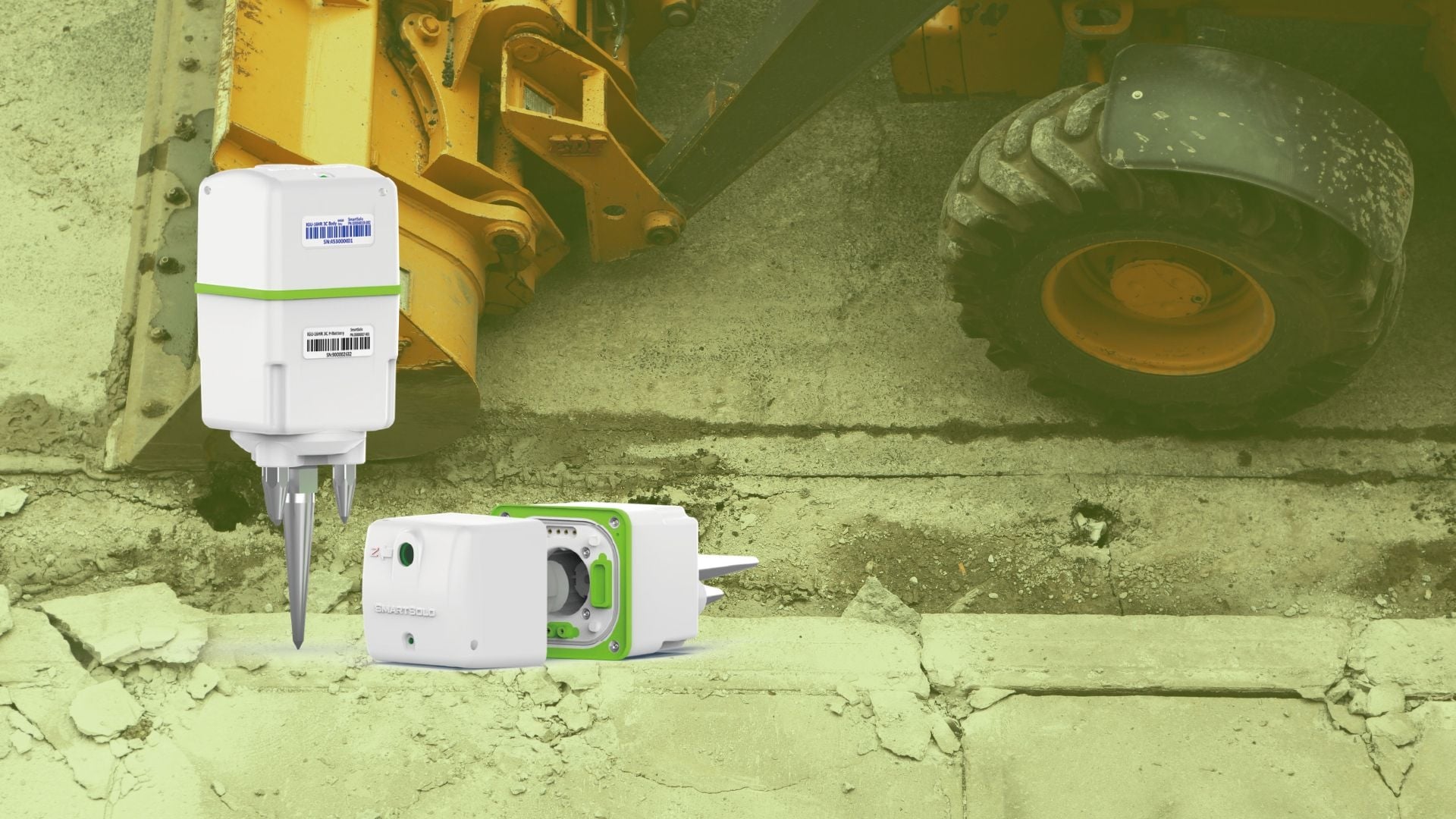
Introduction
Ground-borne vibrations from construction, traffic, and machinery pose significant challenges in civil engineering, affecting structures and sensitive equipment. Addressing these effectively is crucial for ensuring structural integrity and reducing disruptions. Tire Derived Aggregates (TDA) have emerged as a sustainable alternative to traditional vibration mitigation methods, offering a circular economy solution while enhancing performance.
The Need for Sustainable Vibration Mitigation
With rapid urbanization, ground-borne vibrations are becoming more prevalent. These vibrations, often Rayleigh waves near the ground surface, can damage structures, disrupt equipment, and affect human well-being. Traditional methods like open trenches or concrete barriers have limitations, including high costs and environmental impacts. TDA, made from recycled tires, provides an eco-friendly alternative.
Role of SmartSolo Nodes in Vibration Studies
The SmartSolo IGU-16HR 3C nodes played a pivotal role in Dalhousie University’s study on TDA trenches. These nodes feature:
- High Resolution: Three-dimensional vibration measurements for accurate data collection.
- Wide Frequency Range: Suitable for various earth science applications.
- Exceptional Sensitivity: Ideal for capturing subtle vibration changes.
This advanced technology enabled precise evaluations of TDA’s effectiveness in mitigating vibrations.
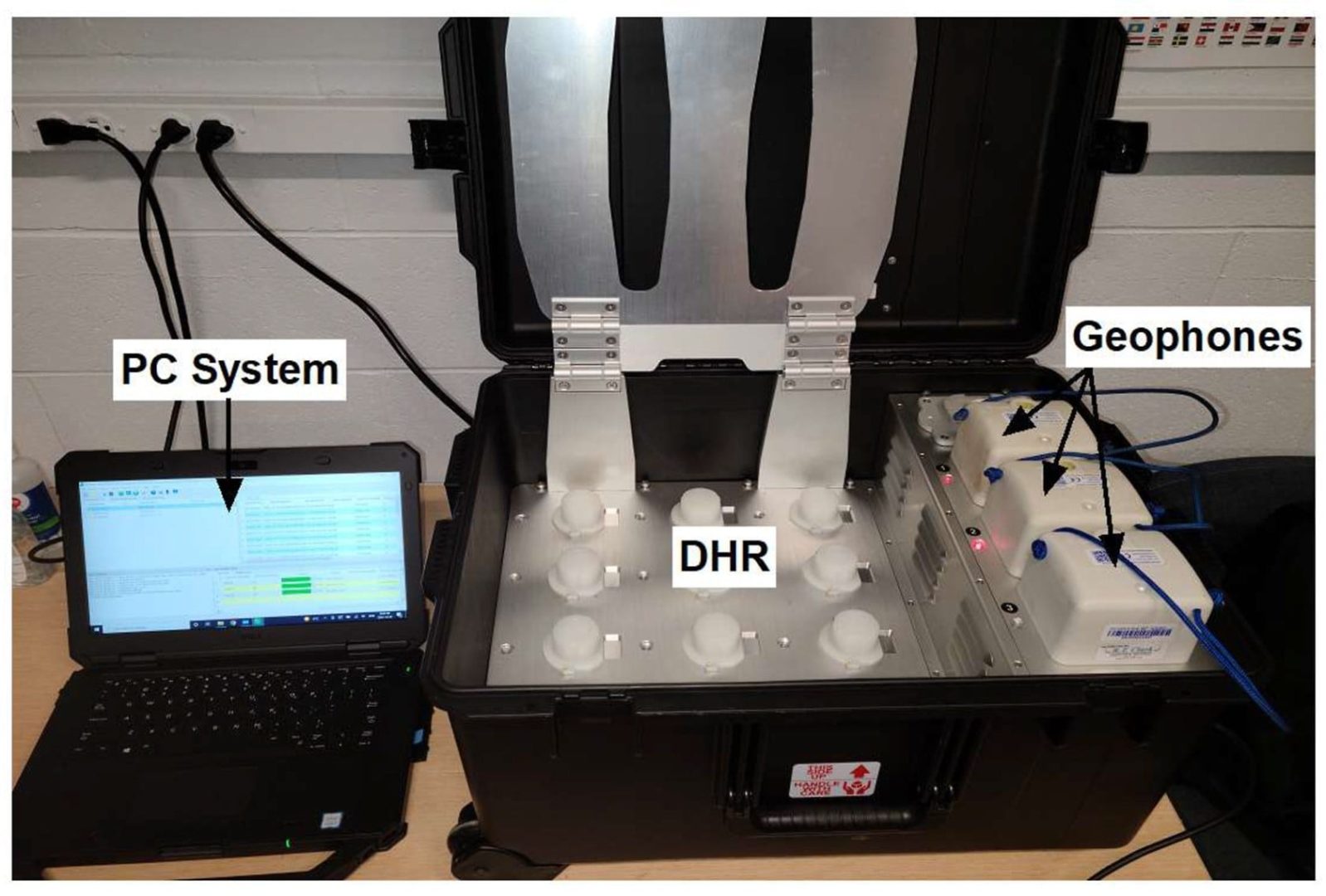
Dalhousie University Study: Methodology
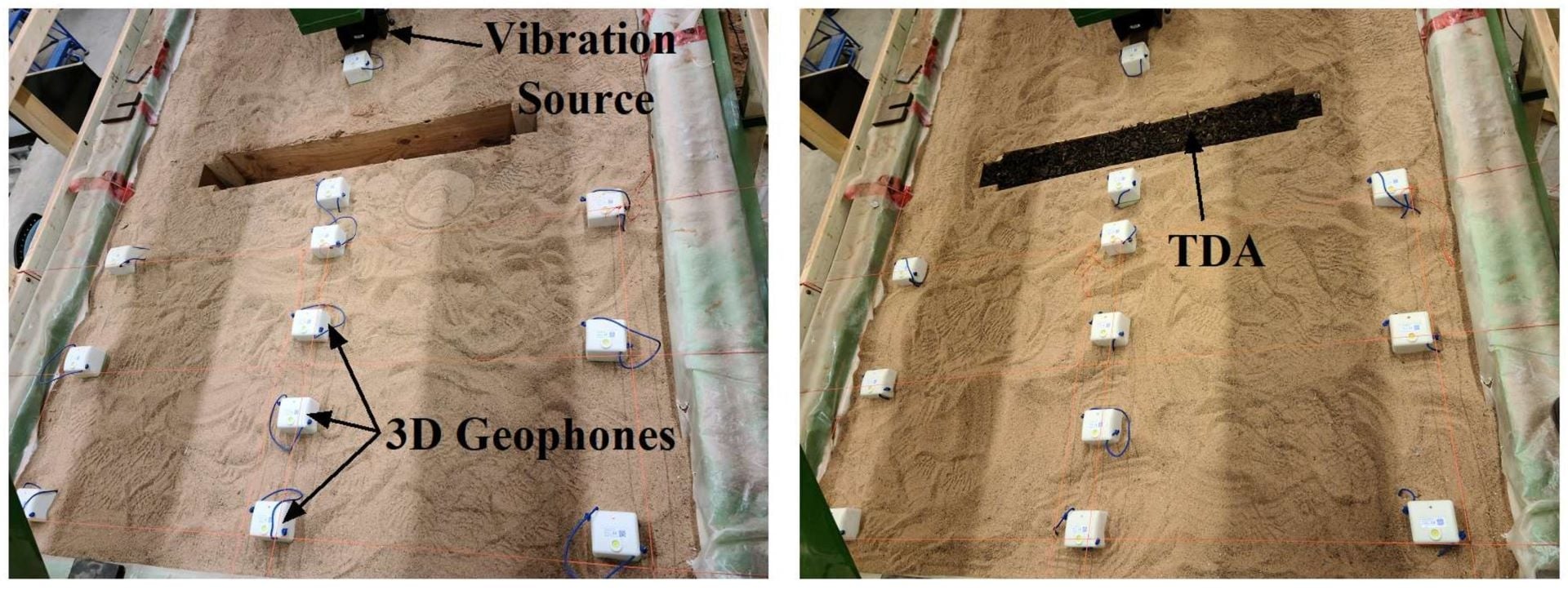
Researchers conducted experiments in a controlled environment using a steel tank filled with poorly graded sand (SP). To minimize external influences, the tank was lined with EPS geofoam sheets. SmartSolo nodes were strategically placed to measure:
- Soil particle velocity at various points.
- Impact of trench depths, vibration frequencies, and burial depths on TDA performance.
Data was analyzed using Fast Fourier Transformation (FFT) to assess amplitude reduction ratios (Ar), a key metric for vibration mitigation.
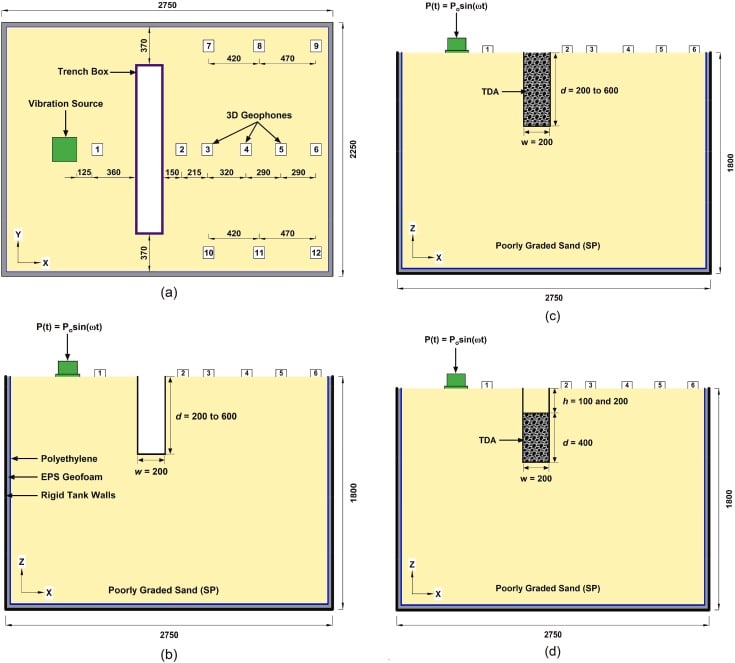
Key Findings
TDA Performance Highlights
- Superior Vibration Absorption:
- TDA trenches consistently outperformed open trenches, thanks to their high damping capacity.
- Optimal Trench Depth:
- An ideal normalized trench depth (D = trench depth / Rayleigh wavelength) of 1 to 1.3 was identified for maximum isolation.
- Frequency Dependence:
- Higher frequencies achieved better mitigation for given trench depths.
- Directional Effectiveness:
- TDA trenches excelled in mitigating vertical vibrations and performed consistently across all directions.
- Burial Depth Impact:
- Soil-covered TDA trenches showed reduced effectiveness, with optimal burial depth (H = soil cover depth / Rayleigh wavelength) below 0.15.
Broader Implications
These findings offer engineers critical parameters for designing effective TDA trenches, optimizing dimensions, and maximizing vibration isolation.
Significance of the Research
The study showcases TDA’s potential as a sustainable, cost-effective solution for vibration control. The precise measurements facilitated by SmartSolo IGU-16HR 3C nodes were instrumental in uncovering these insights. By combining advanced technology with innovative materials, this research contributes to:
- Safer, more resilient infrastructure.
- Environmentally friendly engineering practices.
- Reduced reliance on traditional, resource-intensive methods.
Conclusion
The integration of SmartSolo nodes and TDA in vibration mitigation research marks a significant step forward in sustainable civil engineering. By providing actionable insights and enabling precise data collection, this collaboration empowers engineers to develop eco-conscious, efficient solutions for vibration control.
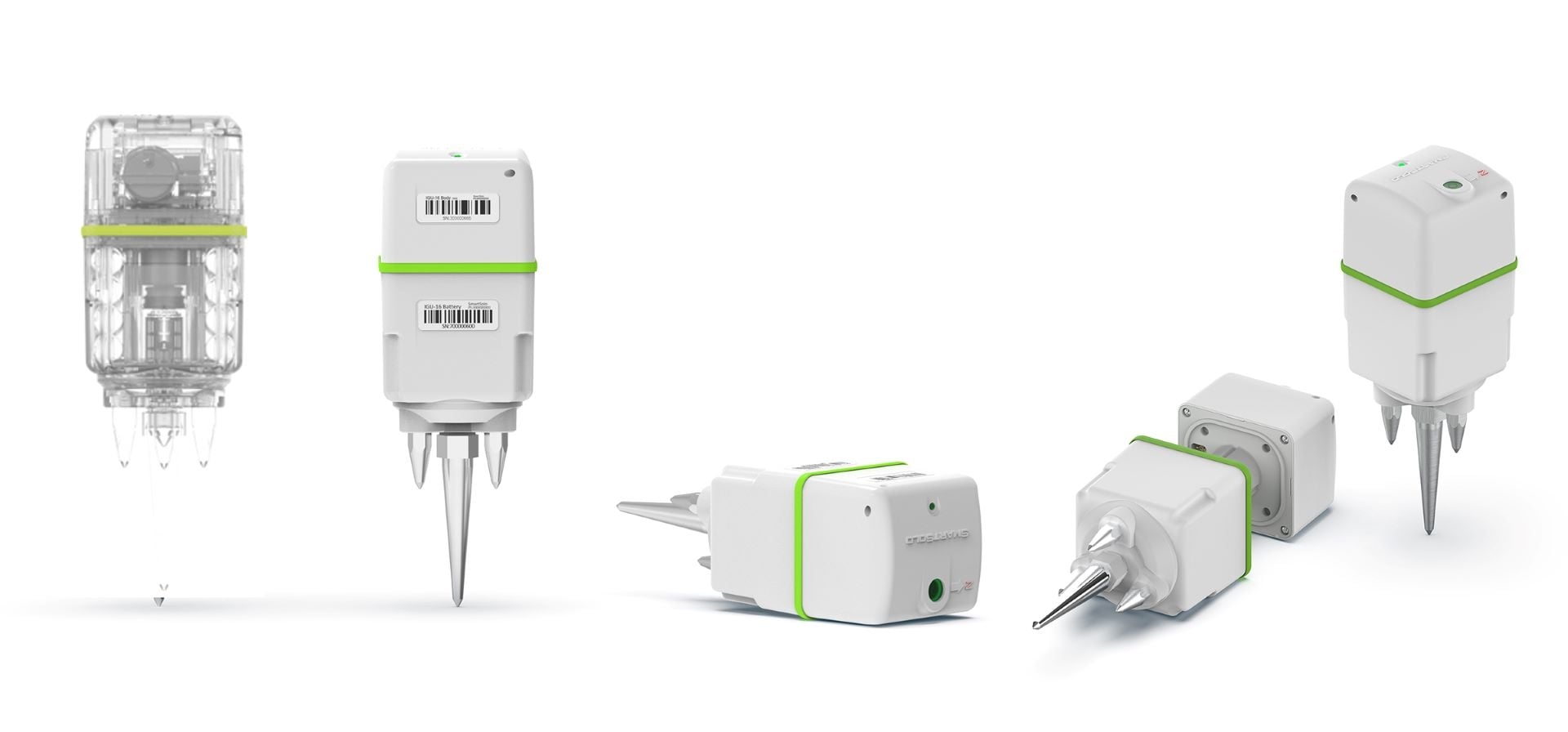
Source: Using tire derived aggregates (TDA) as infill material for wave barriers
